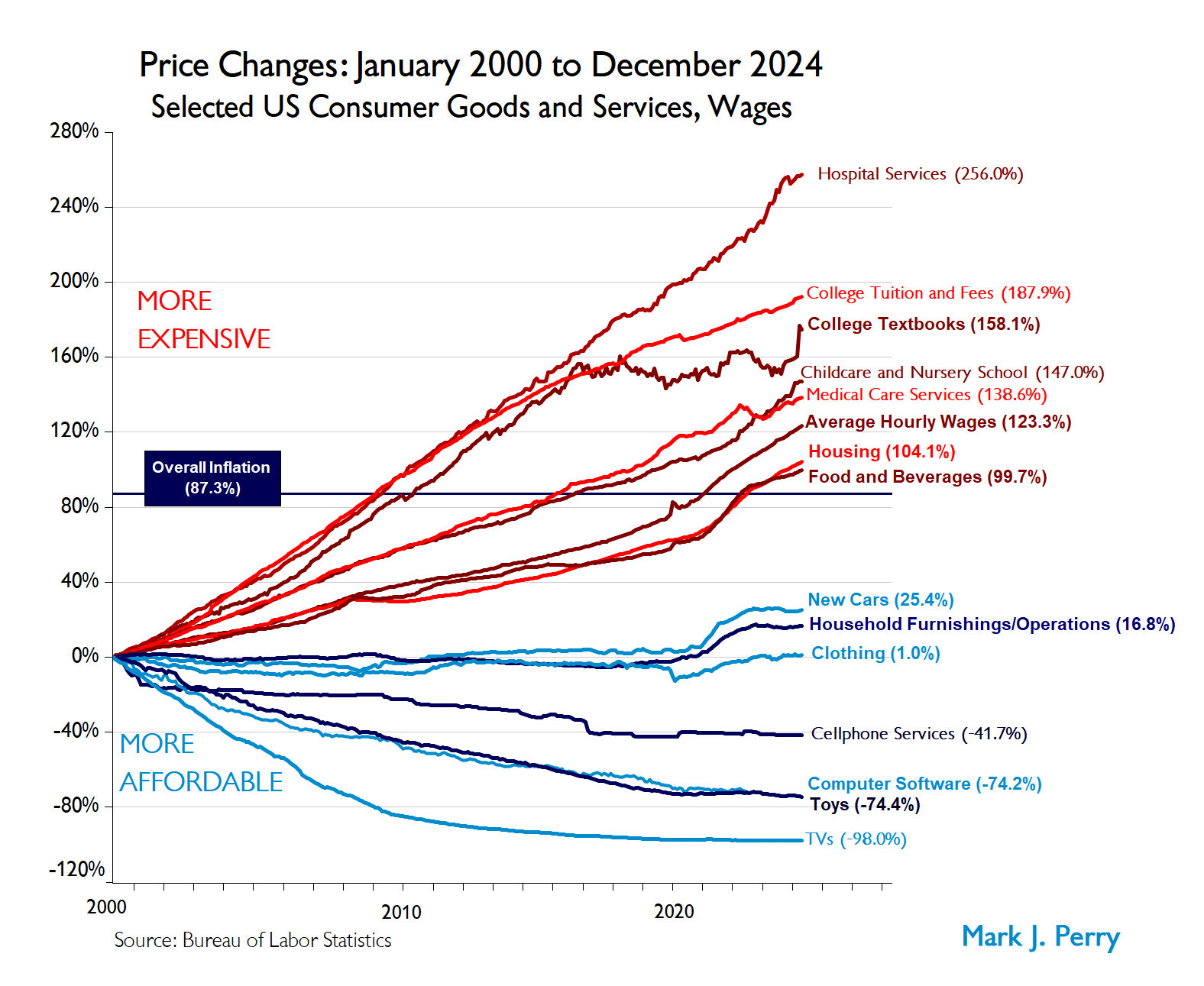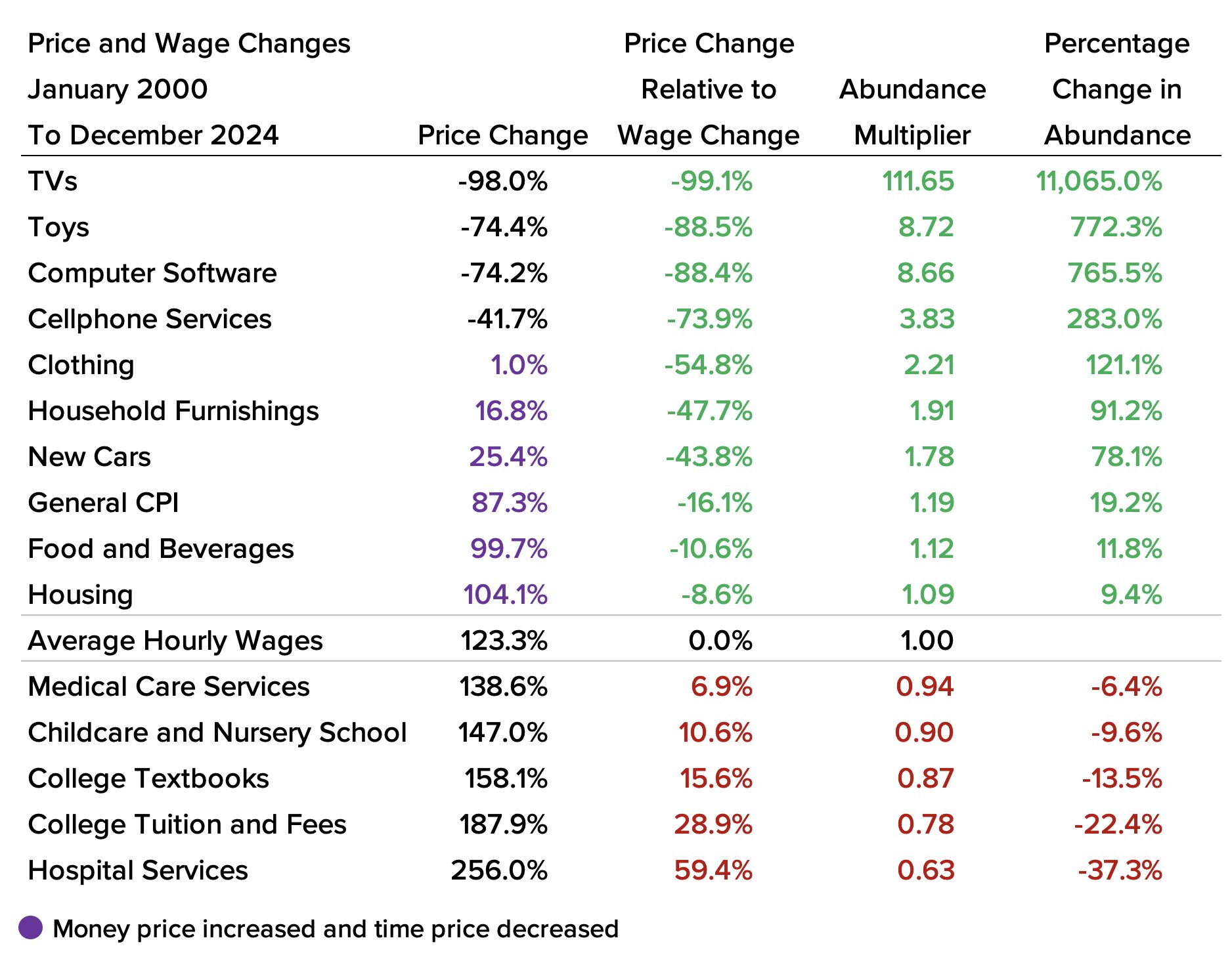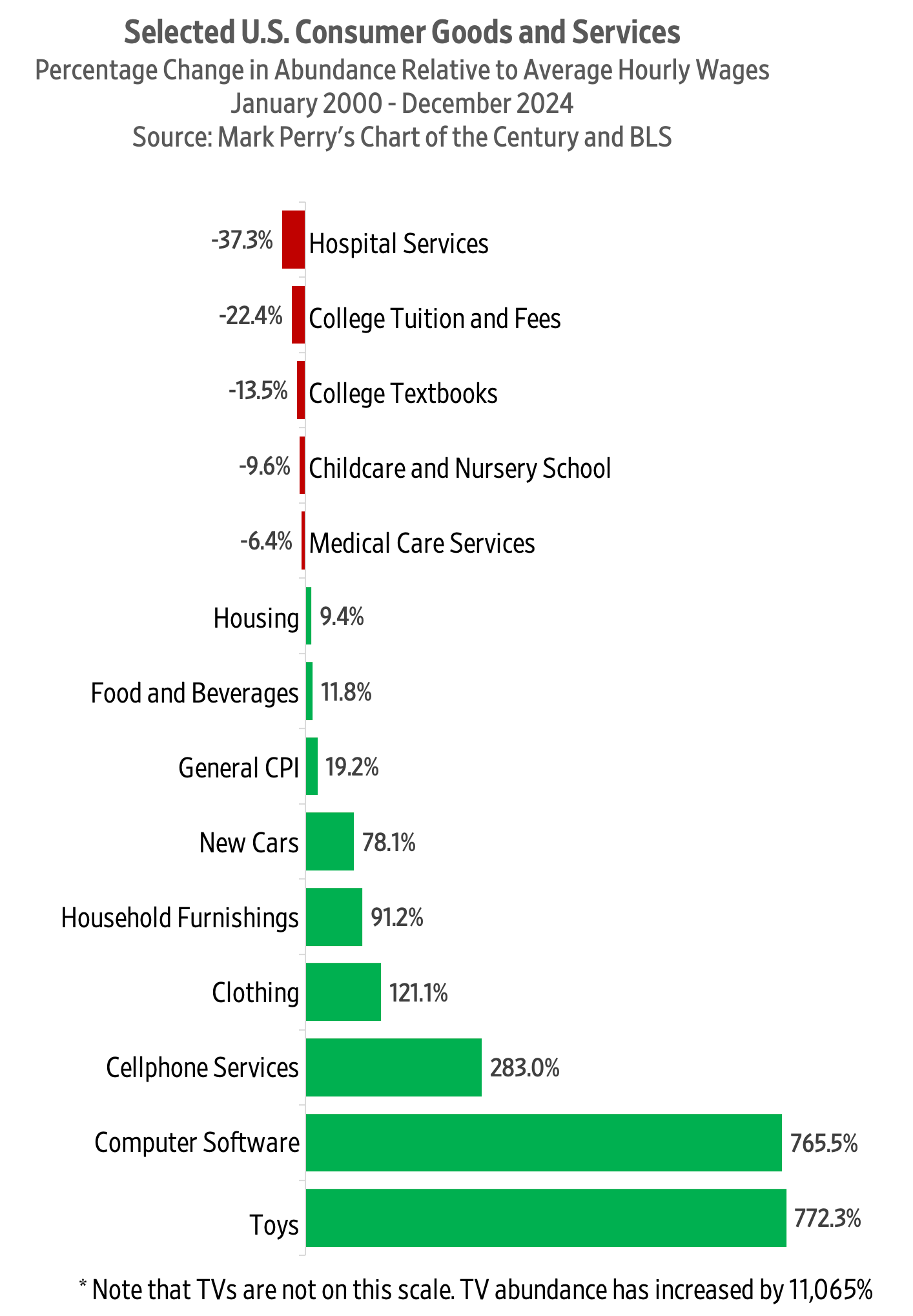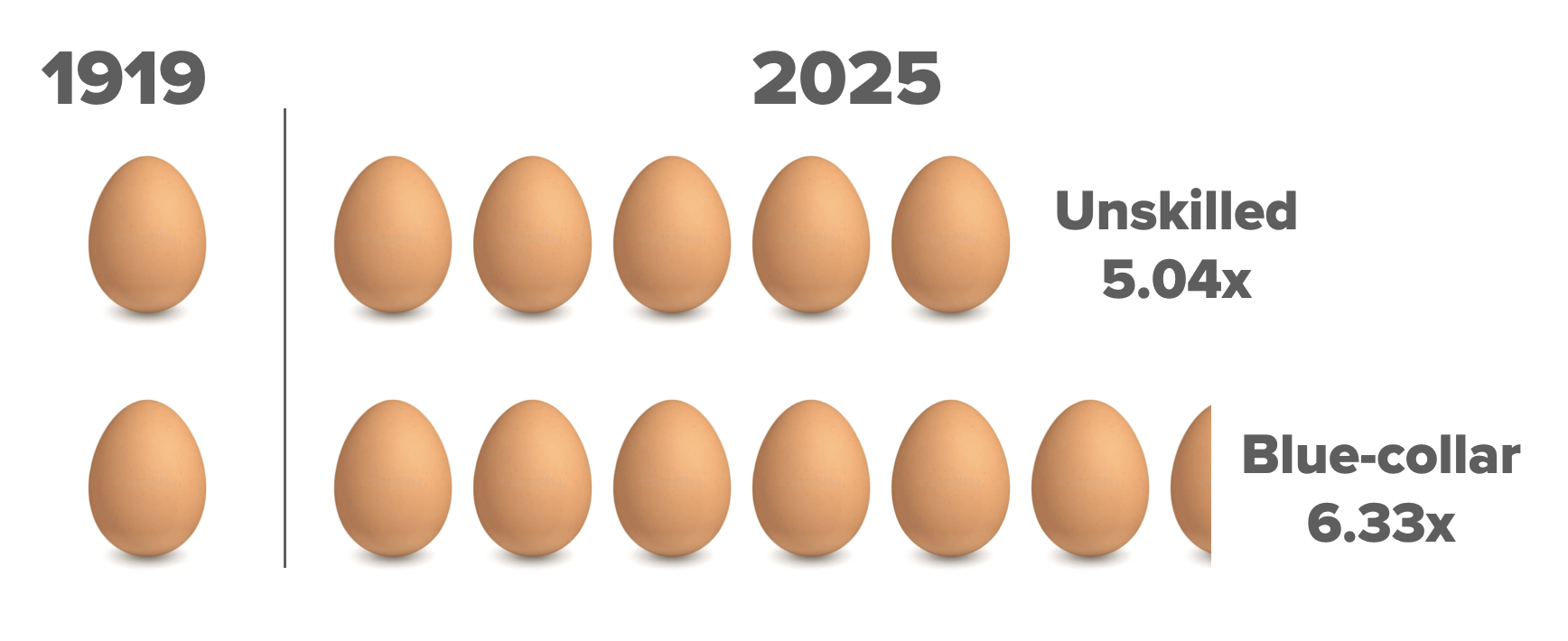In the 1990 movie Home Alone, eight-year-old Kevin McCallister went grocery shopping. He bought a half gallon of milk, a half-gallon of orange juice, a TV dinner, bread, frozen mac and cheese, laundry detergent, cling wrap, toilet paper, a pack of toy soldiers, and dryer sheets. His bill came to $19.83.
Professor Christopher Clarke at Washington State University did an analysis of the items and estimated that today’s price would be about $40.60, or 104.7 percent higher. But we know that things can become more expensive and more affordable at the same time. How is this possible?
Because wages typically increase faster than prices. In the past 33 years, unskilled hourly wages have increased by 178.3 percent from $6.03 per hour to around $16.50. This means the time price of Kevin’s basket has fallen by 25.2 percent. For the time it took to earn the money to buy the basket in 1990, you get 1.337 baskets today. Grocery abundance has increased by 33.7 percent.
If you had been upskilling from an unskilled labor job in 1990 to a blue-collar job today, your wages increased 505.8 percent from $6.03 to $36.50 an hour. Your time price fell by 66.2 percent, giving you almost three times more (195.6 percent) for your hour of work.

Don’t forget to count the kids before taking off on Christmas vacation this year, and remember, life can become more abundant every day if people are free to innovate.
This article was originally published at Gale Winds on 12/9/2023.







